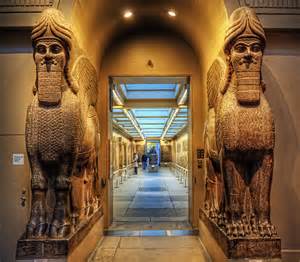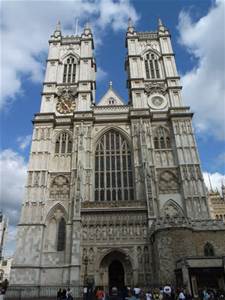The architecture of London is simply amazing.
You have the skyscrapers of the Docklands business district in the east and the iconic structure of Parliament at the West end (with the tower that holds Big Ben) framing an assortment of buildings that span more than 1000 years. The Westminster Abbey has its roots back in the 11th century. There are still Tudor lathe and plaster structures dating from Shakespeare’s day—though they are few and far between, because the fire of 1616 wiped most of those structures out for good. There are lots of Georgian structures—from that 17th century reconstruction. And then there are the inspiring modern structures–The London Eye, The Gherkin, and the Shard—names that make perfect sense once you see them.
The Museum of London does a wonderful job of tracing London’s roots back through the ages . . . and though it’s not on the A-list of museums to visit, it’s really helpful in understanding the evolution of the city (and it’s a wonderful museum with exceptional guides).
The British Museum does the same thing with world history—its collections are so vast that we probably clocked a few miles during our “Around the World Tour.” It would probably take as long to fully explore the collection as it would take for an around the world trip. It’s amazing what can be revealed about a culture from its surviving artwork. We saw sculpture from 12th century Nigeria that was as detailed and precious as the work of Michelangelo in 15th century Italy. But it was a stone carving far older than those that really took my breath away. The human headed winged bulls—taken from an Ancient Assyrian city gate helped me see the power of that ancient empire that that figured so powerfully in Ancient Israel’s history. Wish I had more time to explore here.
Where I did spend a lot of time exploring was Westminster Abbey and St. Paul’s Cathedral. Both Church of England . . . but more museum than parish these days. The fees to enter (other than for many of the daily worship experiences) is staggering–£20 ($32 U.S.) at Westminster and £17 at St. Paul’s. Of course, once you enter, you realize that the upkeep on these amazing structures is probably also staggering . . . so what better way to bring in revenue than to ask the tourists to support ongoing maintenance. It’s funny to think of churches as museums, but that is really what they are. Especially Westminster Abbey—where the history of kings and queens is told in marble tombs.
There are over 3500 people buried in the Abbey, beginning with /Edward the Confessor who was the Abbey’s founding king. The Coronation Throne, which is made of wood, is on display in one of the chapels. But these days, most of the chapels are so filled with tombs and monuments, that there’s not much room for people. In one chapel, Elizabeth the 1st is buried with her sister Mary . . . and in another chapel not far away, Mary Queen of Scots (beheaded for treason during Elizabeth’s reign) is buried in a more elaborate tomb built by her son James the 1st of England (6th of Scotland) after he ascended to the throne following the death of the childless Queen Elizabeth. What goes around comes around, I guess!
There is so much to see that I’d highly recommend anyone visiting take a guided tour. The £5 additional cost is well worth it. As is a stop at the Cellarium Café where I enjoyed a steaming bowl of pumpkin curry soup along with a lovely pot of tea.
I learned a lot of interesting tidbits on my tour . . . first, the beautiful Irish crystal chandeliers (each 10 feet high, though they’re still dwarfed by the 10 story expanse of the cathedral) were donated by the Guinness family! There are church mice carved into the standing candlestick bases on the altar platform! Coronations for English kings have been happening here since 1066 (though you’ll have to go to the Tower of London to see the incredible finery that is used during those coronation worship services). Did you know, the first English king was actually crowned in Bath?!?
Vergers are the lay people who stage manage all worship services at the abbey—and there are lots of them. They also serve as tour guides. Our verger/guide had participated in the funeral service for the queen mum back in 2011 and the recent royal wedding. You can tell that the vergers are all business when worship is about to begin. They guide every movement of the worshippers as well as the priests.
As I sat in the splendor of the cathedral during evening prayer I mused about what it must be like to pastor at a church that had different worshippers for every service . . . a church that was truly more royal officiant and museum than congregation (our verger guide told us that Westminster was a “royal peculiar,” answering not to a bishop, but directly to the queen). As I listened to the beautiful sung Psalm of the choir, I noticed an inscription over the altar that served as a reminder that the kingdom of England would always be beholden to a greater kingdom: “The kingdoms of this world are become the kingdoms of our Lord and of his Christ.”
On the lectern were inscribed the words, “Attempt great things for God.” And, even in these circumstances, that is certainly possible as people from every nation flock to see the wonders of this ancient place of worship. Who would have ever imagined the potential for ministry to hundreds of thousands of tourists in a place like this?
Sunday, we worshipped at St. Martin in the Fields (though the fields are long gone and Trafalgar Square is at its front door, the name hasn’t changed). It was far different in feel from Westminster Abbey and St. Paul’s. It has a world-renowned music ministry (often broadcast by BBC) and a powerful ministry to immigrants and homeless in the area. Each week, they hold worship services in both Mandarin and Cantonese—ministering to the Chinese in London. During our worship service, we heard drumming outside the walls of the church as a Chinese New Year’s celebration was underway, along with loud snoring from the pews behind us where homeless men were sleeping, safe from the cold outside. What a change from our Sunday worship the week before in Shakespeare’s Holy Trinity Church in Stratford upon Avon where the preacher had fight to be heard over the cooing of pigeons in the rafters!
Another church we visited, but didn’t worship was a different St. Paul’s, at Covent Garden, a parish that had a mission of bringing together “faith and theatre for the enrichment of both.” In this “actors’ church” they pray each day of the week for different people involved in the performing arts: actors, company managers, cleaners, electricians, puppeteers, directors, musicians, and writers. What a remarkable ministry in a city with more theatres than any other city in the world. This church is filled with memorials to actors, including Charlie Chaplain, Vivien Leigh, Noel Coward and Boris Karloff. It was fun for us to learn that Dame Judi Dench is a patron of the congregation. We saw her at the premiere of The Second Best Exotic Marigold Hotel at Leicester Square just a few days ago!
Thinking about the churches of London and their various ministries is stirring in me a longing for our congregation at Redeemer to be attentive to the places where God is calling us into ministry. What opportunities are right at our doors? How might we answer God’s calling to serve those that God is bringing into our midst?








Thank you for the heart and soul you put in to these posting’s. It is like we are touring with you!
Ellen
LikeLike